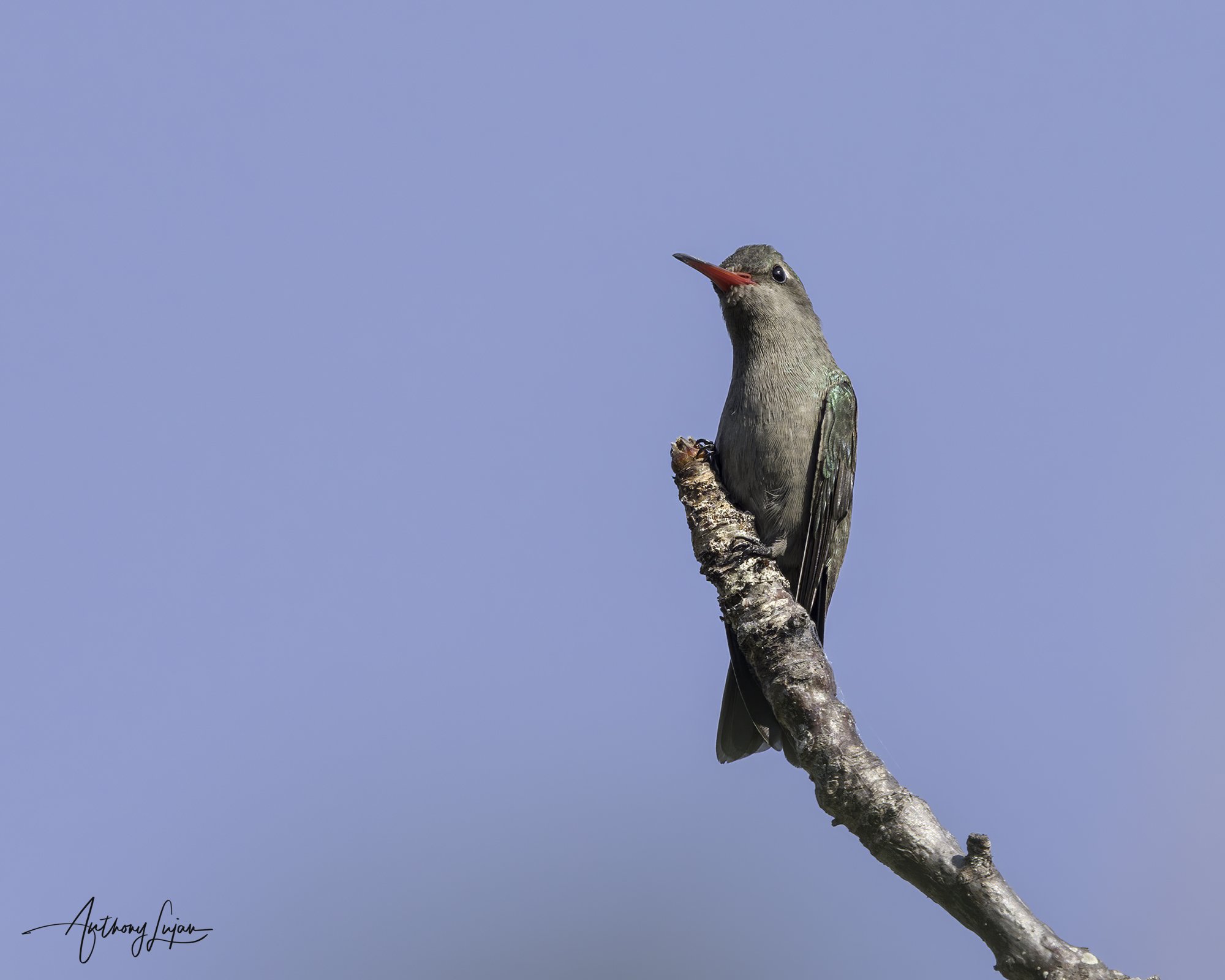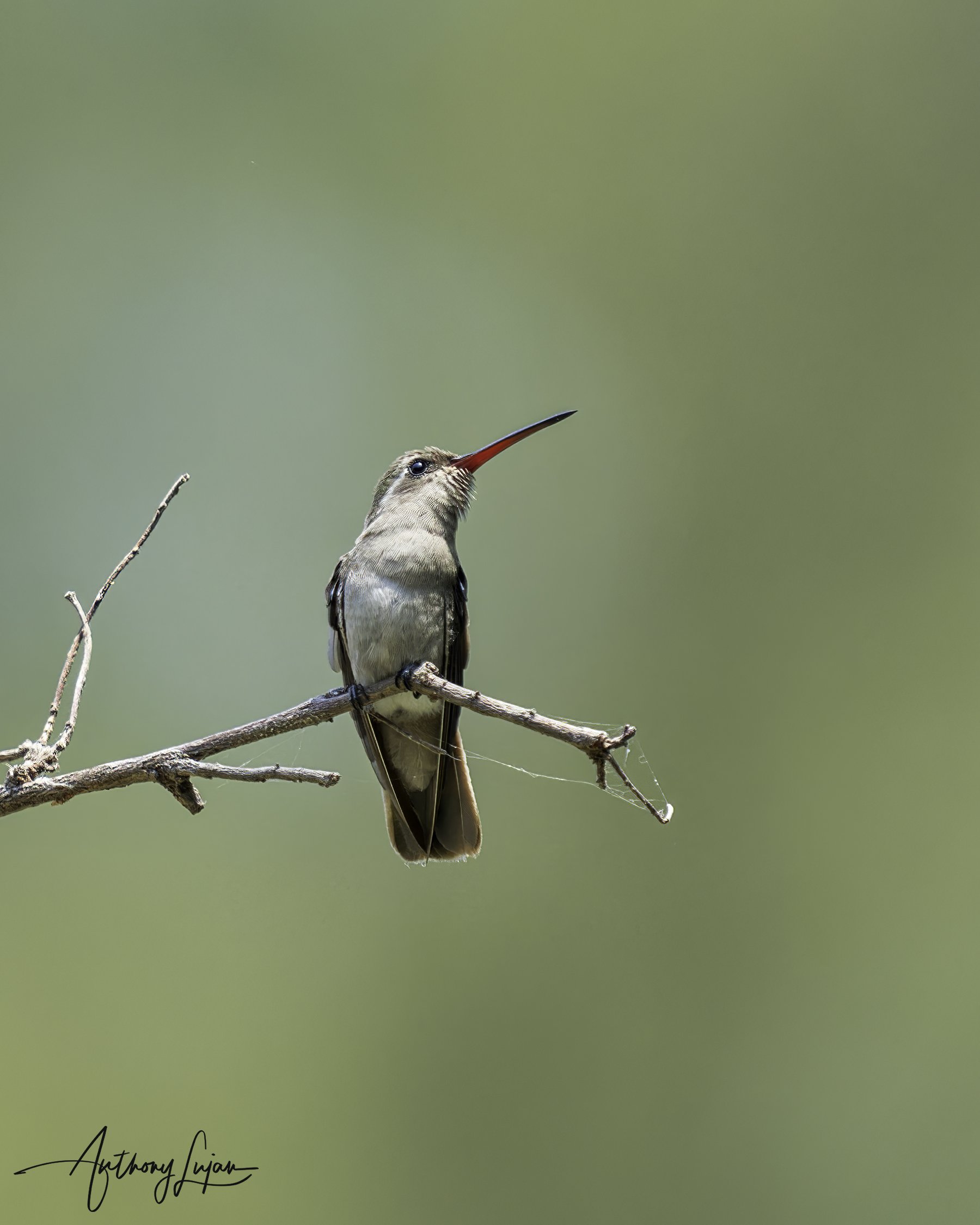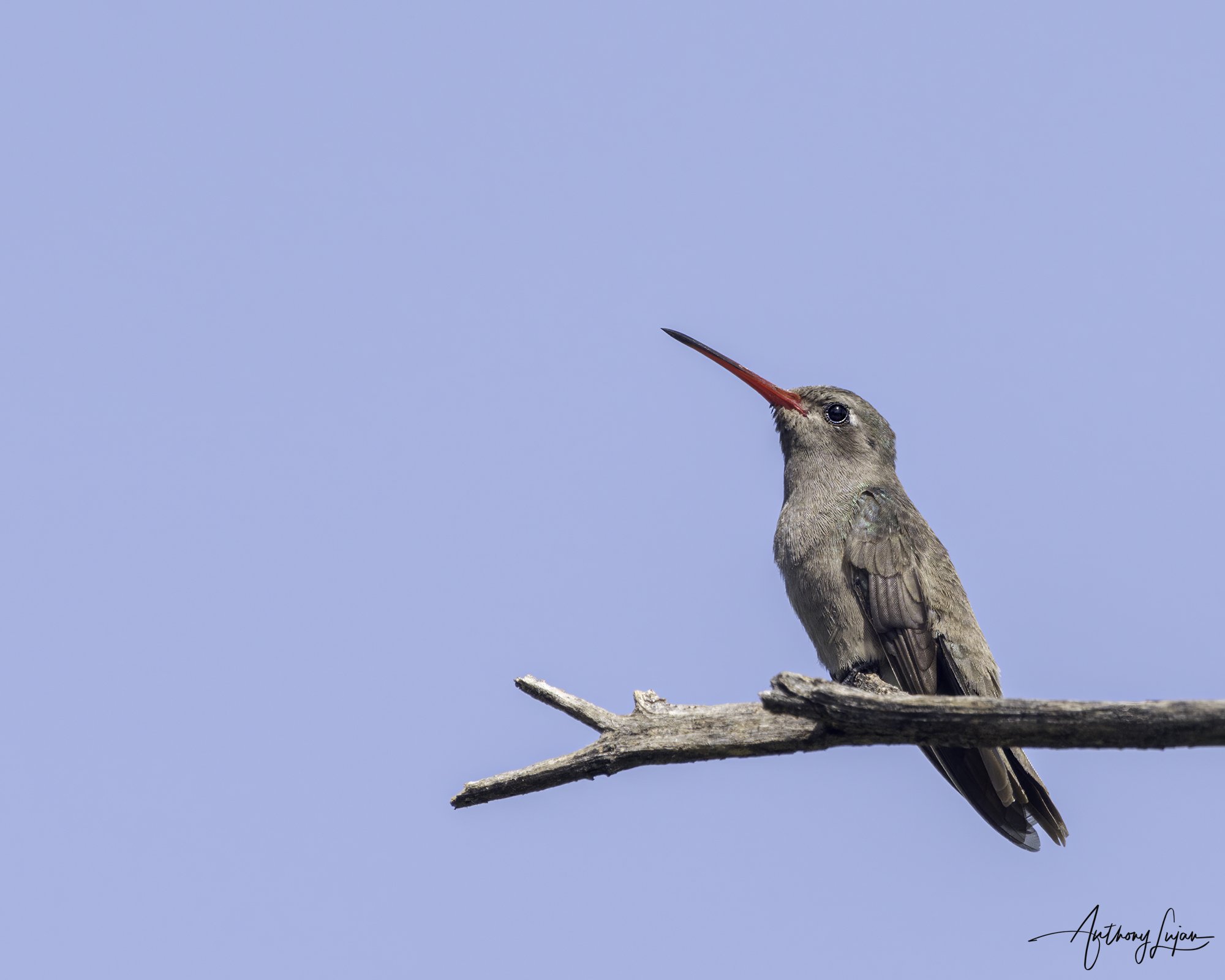Dusky Hummingbird
Dusky Hummingbird (Phaeoptila sordida)
Name Origin:
The genus Phaeoptila combines Greek phaios (“dusky” or “gray”) and ptilon (“feather”), directly referring to its muted coloration. The species name sordida is Latin for “dingy” or “dull,” further describing its soft, subdued plumage tones.
Quick Facts
🪶 Length: 9–10 cm (3.5–3.9 in)
⚖️ Weight: 3–3.5 g (0.11–0.12 oz)
🌎 Range: Endemic to western Mexico
🧭 Elevation: 600–2,000 m (2,000–6,600 ft)
🌸 Diet: Nectar and small insects
🏡 Habitat: Arid scrub, thorn forest, and open woodland
🧬 Clade: Trochilini “Emeralds” (arid-zone hummingbirds)
📊 Status: Least Concern (IUCN 2024)
Subspecies & Distribution
Monotypic species — no recognized subspecies.
Distribution: Found in western Mexico, from southern Sonora and Sinaloa southward through Nayarit, Jalisco, Colima, and Michoacán. Inhabits thorn scrub, dry tropical forest, and arid foothills, often near flowering trees such as Erythrina, Ipomoea, and Bauhinia.
Species Overview
The Dusky Hummingbird is one of the few hummingbirds specialized for semi-arid and dry deciduous habitats in western Mexico. Its muted plumage allows it to blend into its environment, while its slender bill and quick, darting flight make it adept at feeding from tubular desert flowers. Despite its plain appearance, it is an active, vocal species, often perching conspicuously on open twigs.
Male Description:
The male has bronzy-olive upperparts, grayish underparts, and a slightly curved black bill. The tail is dusky bronze with faint rufous edging, and the throat shows a subtle greenish sheen in strong light.
Female Description:
The female is similar to the male but paler below, with less gloss on the throat and a narrower, more rounded tail.
Habitat & Behavior:
Prefers arid and semi-arid habitats, particularly thorn scrub and dry forest edges, often near streams or canyons where flowering plants are concentrated. It feeds on nectar from Ipomoea, Tecoma stans, and other desert flora, and supplements its diet with small insects caught on the wing. The Dusky Hummingbird is territorial but less aggressive than most species, often returning to the same perch or feeding site repeatedly. Its song is a soft, chattering sequence of high-pitched notes.
Conservation Note:
The Dusky Hummingbird is listed as Least Concern by the IUCN and is considered locally common across much of its range. While deforestation and agricultural expansion have altered parts of its habitat, it adapts well to disturbed and semi-open areas. It occurs in several protected regions, including Sierra de Manantlán Biosphere Reserve and Chamela-Cuixmala Biosphere Reserve. Continued habitat management and restoration of dry forests will help sustain populations of this resilient Trochilini species unique to Mexico’s arid west.






Checkout Anthony’s playlist of this species! Click the top right dropdown to see all the videos.

